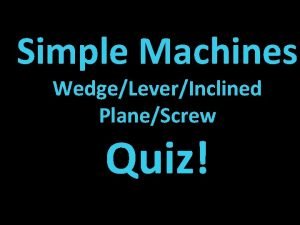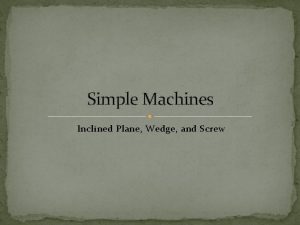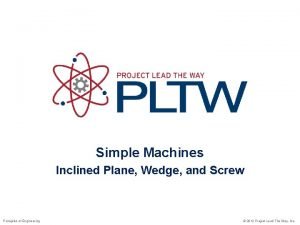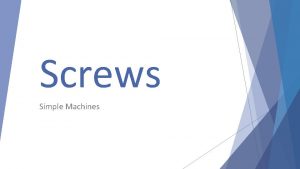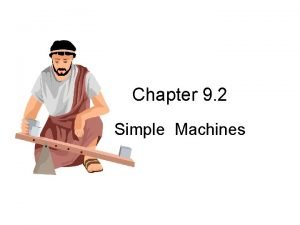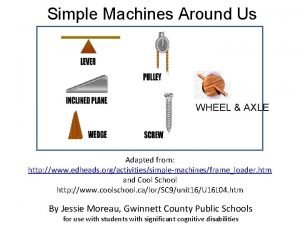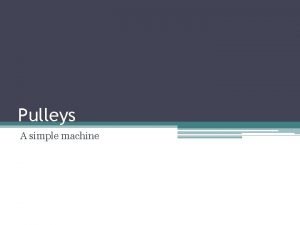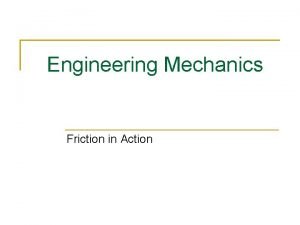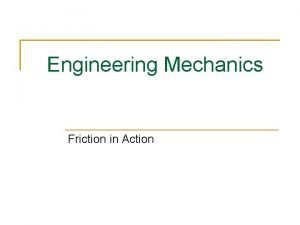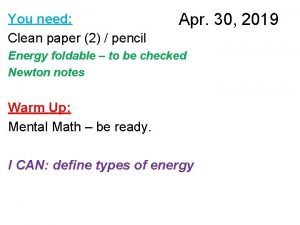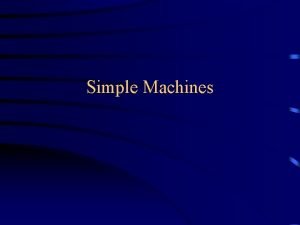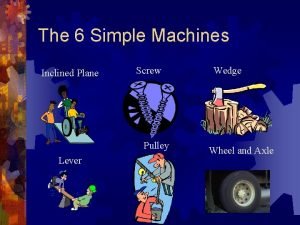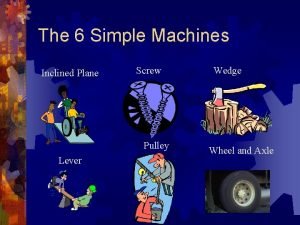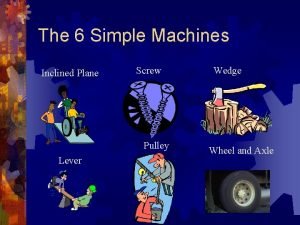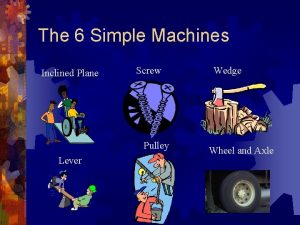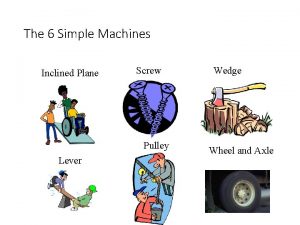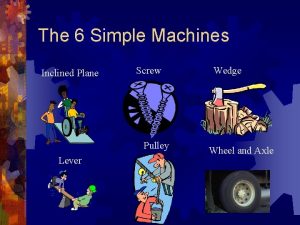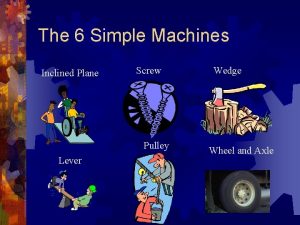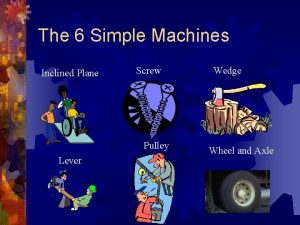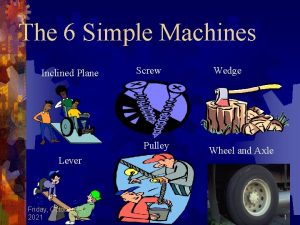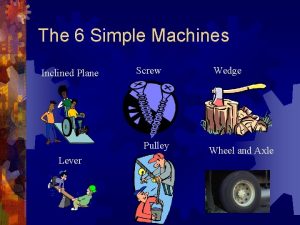The 6 Simple Machines Inclined Plane Screw Pulley














- Slides: 14

The 6 Simple Machines Inclined Plane Screw Pulley Lever Wedge Wheel and Axle

Levers - Video https: //www. youtube. com/watch ? v=J 2 Nt_r. Ra 3 JY

Levers ®A lever is a ridged bar that is free to pivot, or rotate, on a fixed point.

Levers ® Levers are classified according to the location of the fulcrum (fixed point) relative to the input and output forces.

First Class Lever ® In a first-class lever the fulcrum is located at some point between the effort and resistance forces. ®A first-class lever always changes the direction of force (I. e. a downward effort force on the lever results in an upward movement of the resistance force). ® Common examples of first-class levers include crowbars, scissors, pliers, and seesaws.

Second Class Lever ® With a second-class lever, the load is located between the fulcrum and the effort force. A second-class lever does not change the direction of force. When the fulcrum is located closer to the load than to the effort force, an increase in force (mechanical advantage) results. ® Common examples of second-class levers include nut crackers, wheel barrows, doors, and bottle openers. ®

Third Class Lever ® With a third-class lever, the effort force is applied between the fulcrum and the resistance force. ® third-class levers always produce a gain in speed and distance and a corresponding decrease in force. ® Examples of third-class levers include tweezers, hammers, and shovels.

Mechanical Advantage of Levers Input force of 2 lbs. is multiplied by 4 (the IMA) and results in an output force of 8 lbs.

Wheel and Axle ® An axle attached to center of a wheel that rotate together

Wheel and Axle ® The mechanical advantage of a wheel and axle is the ratio of the radius of the wheel to the radius of the axle.

Pulleys - Video https: //www. youtube. com/watch ? v=9 T 7 t. Gos. XM 58

Pulley ®A pulley is a simple machine made of a grooved wheel with a rope or cable wrapped around it.

Pulleys – 3 types ® Fixed Pulley: changes the direction of a force; however, it does not create a mechanical advantage. ® Movable Pulley: rises and falls with the load that is being moved. A single moveable pulley creates a mechanical advantage; however, it does not change the direction of a force. ® Block & Tackle Pulley: a system of two or more pulleys with a rope or cable threaded between them, usually used to lift or pull heavy loads.

IMA= number of sections of rope supporting the object Fixed pulley IMA = 1 Moveable pulley Block and Tackle IMA = 2
 Quiz 4: inclined plane, wedge, and screw
Quiz 4: inclined plane, wedge, and screw Inclined plane wedge
Inclined plane wedge Ama of wedge
Ama of wedge Importance of simple machine
Importance of simple machine Simple machines examples
Simple machines examples Wedge simple machine examples
Wedge simple machine examples Wheel and axle simple machines
Wheel and axle simple machines Pulley system examples
Pulley system examples A flat belt connects pulley a to pulley b
A flat belt connects pulley a to pulley b Belt friction formula
Belt friction formula Simple machine examples
Simple machine examples Data plane control plane and management plane
Data plane control plane and management plane Inclined plane simple machine
Inclined plane simple machine Inclined planes examples
Inclined planes examples Curved inclined plane
Curved inclined plane
